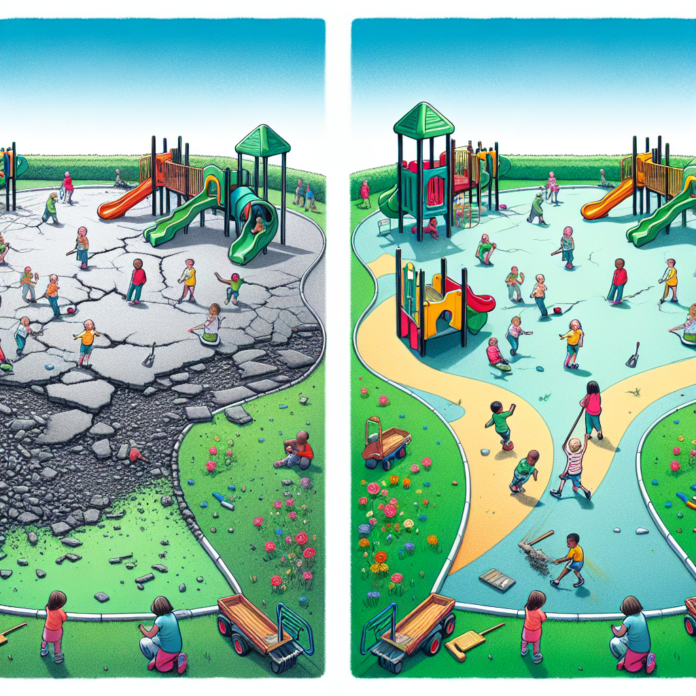Transform Playgrounds by Removing Asphalt for Cooling Benefits
Cooling Playgrounds by Ripping Up Asphalt!
In a bid to create cooler and more environmentally friendly urban spaces, communities across the globe are embarking on innovative projects to transform playgrounds. One such initiative involves ripping up asphalt to make way for greener, more sustainable environments that prioritize the well-being of children and the planet.
The Problem with Asphalt
Asphalt, commonly used in playgrounds and urban areas, contributes to the urban heat island effect by absorbing and retaining heat. This results in higher temperatures in cities, making them uncomfortable and potentially dangerous during heatwaves. The hard surface can also lead to injuries among children playing on it.
The Benefits of Green Playgrounds
Replacing asphalt with grass, trees, and other natural elements not only reduces surface temperatures but also provides a host of other benefits. Green playgrounds can improve air quality, enhance biodiversity, and provide children with a more engaging and imaginative play environment. They also offer opportunities for environmental education, teaching children about nature and sustainability.
Successful Initiatives Worldwide
Cities around the world are embracing this trend. In Paris, the "Oasis Schoolyard" project has transformed numerous schoolyards into cooler, greener spaces. Similarly, New York City’s "Cool Neighborhoods NYC" initiative aims to increase the number of green playgrounds across the city. These projects have been met with positive feedback from both children and parents, who appreciate the more pleasant and safer play areas.
Additional Considerations
When redesigning playgrounds, it’s important to consider the local climate and native plant species to ensure sustainability and minimal water usage. Incorporating features such as rain gardens and permeable surfaces can further enhance the environmental benefits by managing stormwater runoff and reducing flooding risks.
The Role of Community Involvement
Community involvement plays a crucial role in the success of these projects. Engaging local residents, parents, and children in the planning and implementation process can lead to more tailored and effective solutions. It also fosters a sense of ownership and pride in the community, encouraging ongoing maintenance and care of these green spaces.
The Future of Urban Playgrounds
As climate change continues to pose challenges for urban areas, the transformation of playgrounds presents a promising solution. By prioritizing sustainable design and community engagement, cities can create healthier, more resilient environments for future generations. The movement to cool playgrounds by replacing asphalt with green spaces is not just a trend but a necessary step towards a more sustainable urban future.


